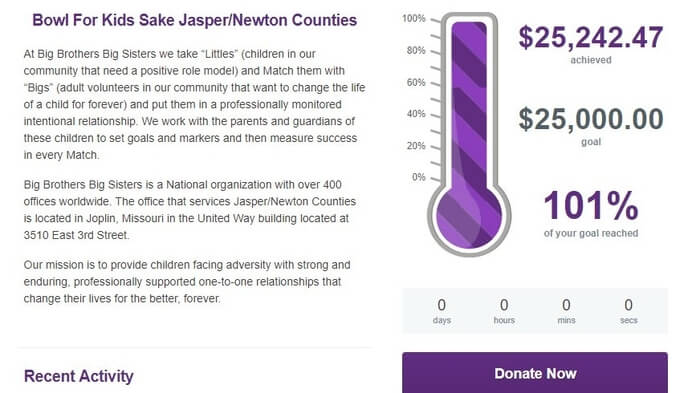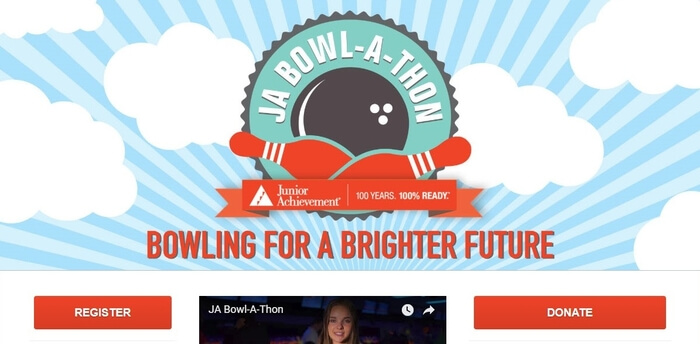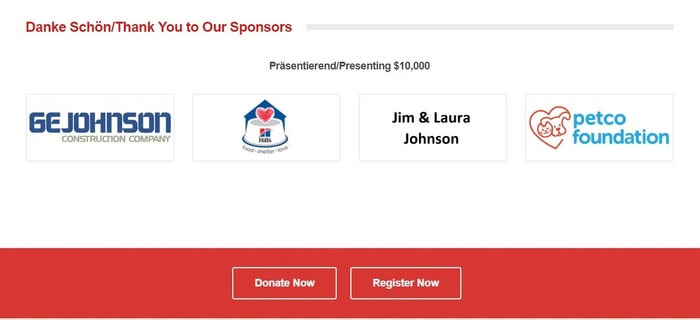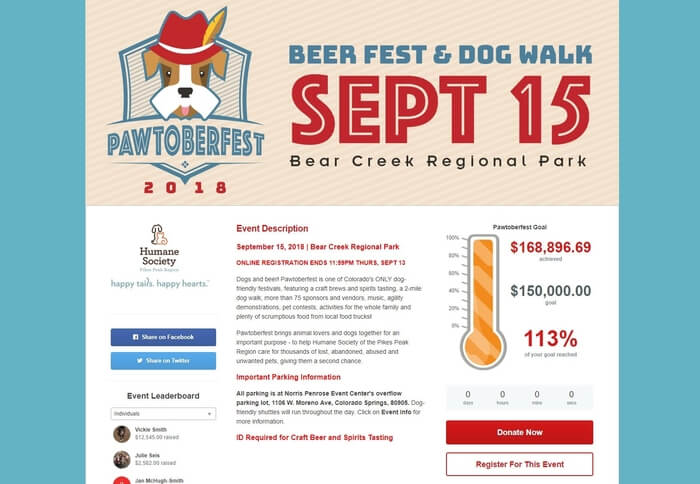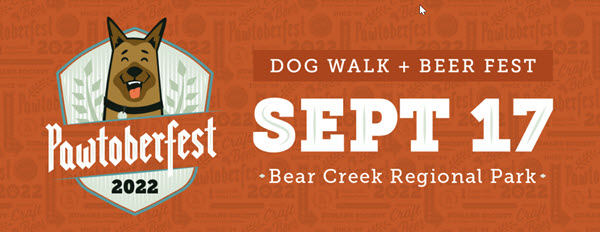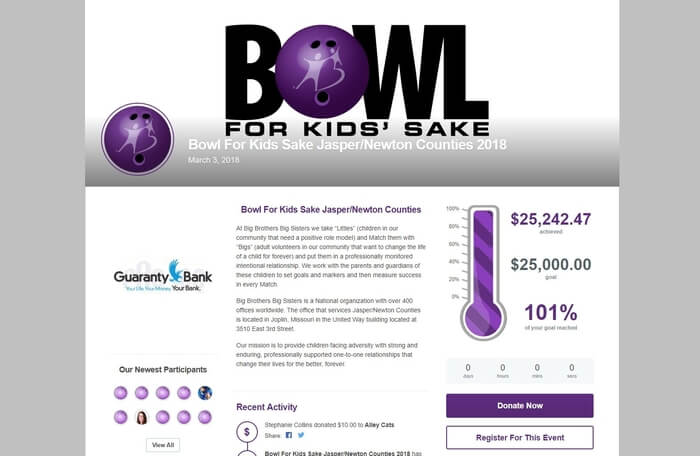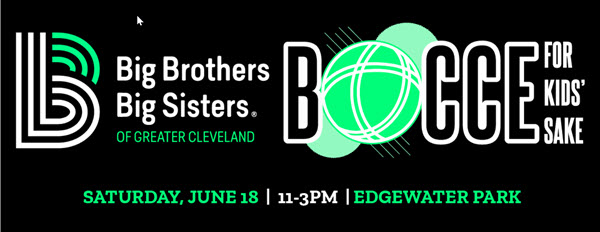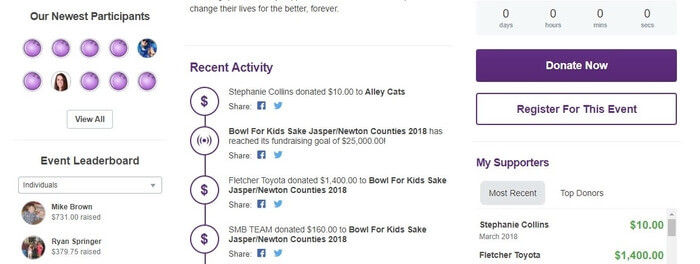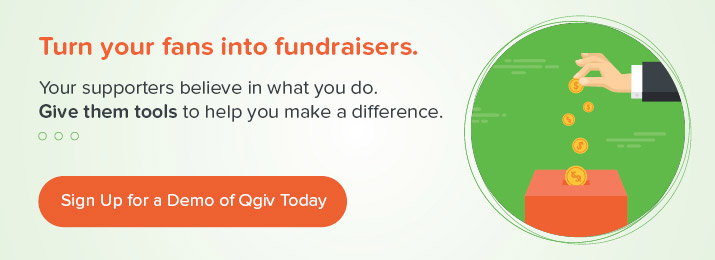Put simply, peer-to-peer fundraising is a strategy that lets people raise money on your behalf using personalized fundraising pages. It lets you tap into your supporters’ existing social networks! That helps you raise money, expand your donor base, and increase community awareness about your cause.
Let’s dive into peer-to-peer fundraising! We’ll cover a ton of information here, including:
- What is Peer-to-Peer Fundraising?
- Getting Started with Peer-to-Peer Fundraising
- Using Peer-to-Peer Fundraising Software
- How Qgiv Can Help Your Peer-to-Peer Fundraising Campaign
If you’re ready to learn more about how peer-to-peer fundraising can work for your organization, read on!
What is Peer-to-Peer Fundraising?
Peer-to-peer fundraising gives your supporters a way to raise money on your behalf. There are different styles, and this type of fundraiser can support individual fundraising, team fundraising, or a mix or both! Your nonprofit can use peer-to-peer fundraising to encourage participation in an event (like bike-a-thons and walkathons), get supporters involved with your mission, and raise more money!
How does peer-to-peer fundraising work?
The process involves a few steps:
- First, you’ll set a fundraising goal and set up its main campaign page using a peer-to-peer fundraising platform
- Then, you’ll recruit volunteer fundraisers to set up their own individual fundraising pages
- Next, you’ll provide the volunteer fundraisers with resources to use while promoting their pages
- During the fundraising stage, volunteer fundraisers share their individual campaign pages on a variety of channels
- Your nonprofit tracks the campaign’s progress and offers continued support to the volunteer fundraisers
Who can use peer-to-peer fundraising?
Everyone can use peer-to-peer fundraising! You’ve probably already seen or experienced this type of fundraising. When individuals raise money for medical expenses or adoption fees on platforms like GoFundMe, it’s generally called crowdfunding. But crowdfunding relies on the same principle as nonprofit peer-to-peer fundraising!
Crowdfunding involves funding a project or campaign by collecting smaller donations from multiple donors. Peer-to-peer fundraising is a more in-depth version of crowdfunding! But some elements stay the same: participants still ask their friends and family to make donations and have their own crowdfunding-style page.
Why does peer-to-peer fundraising work?
Peer-to-peer fundraising campaigns engage donors by involving them in the fundraising process, which also means it can be very cost effective. Also, it’s easy to combine this fundraising style with other campaigns run on online fundraising platforms, which means there’s tons of room to experiment and grow.
You can use this fundraising method to raise money, of course. But it’s also a valuable way to engage your most loyal supporters! It works because:
- Your supporters can customize their donation pages to reflect their own relationship with your mission. That’s a fantastic way to get your supporters thinking about why they value their relationship with you!
- Nonprofit staff and supporters will work closely together, which is a great way to build stronger relationships with your most engaged fans.
- Donors feel more connected to your nonprofit after personally raising money for it!
Donors love participating in these fundraisers because it gives them a way to support their favorite organizations. It also gives them a way to show their friends and family what your mission means to them personally.
When is a good time to use peer-to-peer fundraising?
Peer-to-peer fundraising is incredibly versatile! You can use it in a variety of different ways, including:
- Time-based campaigns. Set a goal and a fundraising deadline. Then, watch your donors race to donate and beat the clock!
- Rolling campaigns. When your peer-to-peer fundraiser has no set end date, you give your donors a valuable way to stay engaged with you year-round. This is a great option for DIY fundraisers, board engagement campaigns, and more!
- Giving days. Giving days like #GivingTuesday are short campaigns that challenge nonprofits to raise as much money as they can during that day. Peer-to-peer fundraising makes sharing the campaign easy and spreads that sense of urgency to lots of different donors.
Peer-to-peer fundraising also increases anticipation leading up to events like competitions. Event-based campaigns work very well! Your participants’ friends and family can support their loved one while supporting a good cause.
How can I make the most of peer-to-peer fundraising?
Encourage your supporters to participate in their employers’ matching gift programs! Every donation made by an eligible donor can be matched at a 1:1, 2:1, or even 3:1 ratio. This means a single donation can have double the impact!
But how do you make it happen? Just provide your donors with access to a matching gift database like Double the Donation! Matching gifts databases give donors a way to see if their gift is eligible for a match. They can also review their employer’s matching gift requirements!
Many companies have a minimum amount they will match. If your supporters know this, they may be inclined to make a bigger donation! Imagine a donor was going to donate $15. Then, during the donation process, they learn their employer only matches gifts $25 or higher. That donor will likely donate $25 so their gift can be matched. That means you can receive $50!
For more peer-to-peer fundraising ideas, check out our guide to over 65 awesome fundraising ideas and events.
Getting Started with Peer-to-Peer Fundraising
You may be asking yourself, “How do I start a peer-to-peer campaign?” We’ve broken all key parts of the planning and execution into 5 simple steps.
Step 1: Define your campaign.
Once you’ve decided to run a peer-to-peer fundraising campaign, you have to ask yourself:
- How much do we want to raise?
- Which kind of campaign is this—rolling or time-based?
- What’s the central theme?
Next, make sure your fundraisers are educated on how the campaign works, what your goals are, and how to use the fundraising software.
Step 2: Facilitate donation pages.
Before your campaign starts, you should help each fundraiser design and personalize their own donation page. Give your participants writing prompts, talking points, graphics, and anything else they might need to create an engaging, effective fundraising page.
Then, after they’ve built their pages, make sure your fundraisers have everything that they need to share their donation pages. Make sure they have access to social sharing buttons, post templates, and ways to sign up to be a volunteer or purchase merchandise.
Step 3: Support Your Supporters!
Once your fundraising campaign is in full swing, stay in contact with your fundraisers by:
- Sharing frequent campaign updates
- Acknowledging and celebrating the most successful fundraisers
- Encouraging hesitant participants
- Engaging with your fundraisers’ posts
Encourage your fundraisers and play to their strengths! Strengths may include a strong, engaged social media following or a close connection with locals in your community. Help them use those assets to raise money!
Step 4: Build relationships with your donors.
As donations come in, you’ll need to keep track of your fundraisers’ efforts and collect new donor data by:
- Syncing new donor information to your CRM.
- Updating existing donor database records.
- Linking donation and interaction history with supporter profiles.
Then, use that information to update donors and participants about your progress. Running a peer-to-peer campaign will help you form deeper relationships with your donors and fundraisers. But you do need to stay engaged with your supporters throughout the process!
Step 5: Recognize your peer-to-peer fundraisers.
Make sure you thank each and every one of your peer-to-peer fundraisers with a personal note, email, or phone call.
Use your end-of-campaign event to celebrate and recognize them, too! Let them know how much you appreciate their help and tell them what their fundraising has achieved. Then, follow up with donors and fundraisers alike to share how you used the money they raised.
How do you successfully fundraise?
Check out two of the most successful peer-to-peer fundraising campaigns of 2018! First, we’ll take a look at the Big Brothers Big Sisters of Jasper/Newton Counties Bowl for Kids’ Sake. Then, we’ll look at the Pikes Peak Humane Society ‘Pawtoberfest’ campaign:
The Pikes Peak Humane Society fundraising campaign is part of the lead-up to their annual Pawtoberfest event, which they continue to hold in 2022 because it’s so successful for them.
What makes this campaign work:
- Varying colors and fonts catch donors’ attention and draw them into learning about the event
- The header image features bright colors and an adorable logo, which reinforces the nonprofit’s brand
- Important event information is front and center in large text, so it’s easy to find
- The fundraising thermometer and event leaderboard create friendly competition between fundraisers
Next, the Big Brothers Big Sisters team explains how they match kids with mentors, and then invites visitors to donate to the campaign, register for the event, or both! This crowd-pleasing event is successfully used by Big Brothers Big Sisters chapters all over the United States. Sometimes they switch up the exact game played, but overall, the general process is the same.
What makes this campaign successful:
- They combined a fun activity (bowling!) with a worthy cause, then give supporters different ways to get involved.
- The “Our Newest Participants” and “Recent Activity” sections are a fun, engaging way to make everyone feel the organization’s appreciation.
How to Market Your Peer-to-Peer Fundraising Campaign
Once you’ve recruited your team of fundraisers and prepared them to raise money, how can you help them spread the message about your campaign?
- Email. Email is one of the most effective methods of asking for donations during this kind of fundraising campaign. Try providing your fundraisers a few templates they can use to email friends and family.
- Social media. Sharing personal fundraising pages on social media brings them to the attention of your fundraisers’ friends and family. Encourage your participants to post updates that share why they’re participating and ask people to give. Once they’ve started posting, be sure to interact with them by liking or commenting on their post.
- Traditional marketing. Ask for donations yourself, too! Direct mail, print advertisements, and face-to-face solicitations are great ways to engage donors who aren’t online or prefer more personal interactions.
Using Peer-to-Peer Fundraising Software
What is peer-to-peer fundraising software?
The concept of peer-to-peer fundraising is relatively straightforward. But how can you stay on top of things when your nonprofit has dozens (or more!) participants?
Comprehensive peer-to-peer fundraising software enables you to:
- Track your campaign’s progress
- Collect donor data
- Sell merchandise
- Customize event registration
- Support both individual and team fundraising
- And more!
Features and Benefits of Peer-to-Peer Fundraising Platforms
Using a peer-to-peer fundraising platform to support your campaign can streamline your process by providing features such as:
- Customizable donation pages
- Social sharing buttons
- Online merchandise storefronts
- Fundraising badges, thermometers, and leaderboards
By including all of these features in one package, peer-to-peer fundraising software makes it easy for your nonprofit to run the most efficient and effective campaign possible.
There are many benefits to using this kind of software. Here are the top three:
- Donors always get a receipt and thank-you note after completing a streamlined donation process
- Branding your donation page to your organization instills trust that the revenue is going to your nonprofit. Fundraisers can easily share their posts and use mobile-optimized pages. Mobile-responsive donation pages do yield 34% more donations.
- Fundraisers can easily share their posts and drive traffic to mobile-optimized pages
Peer-to-peer fundraising software can ensure that your team and your fundraisers have all the tools they need to run a successful campaign.
How Qgiv Can Help Your Peer-to-Peer Fundraising Campaign
When you partner with Qgiv for a peer-to-peer fundraising campaign, you’re not just getting our software! We’ll also:
- Train your team to use the software.
- Scale our software to your organization’s growing needs and adapt as you change.
- Give you ongoing support throughout your campaign for troubleshooting, questions, and more.
Take advantage of all the features that our fundraising platform offers! We’ll support you the whole way, from the planning period to the final thank-you emails.
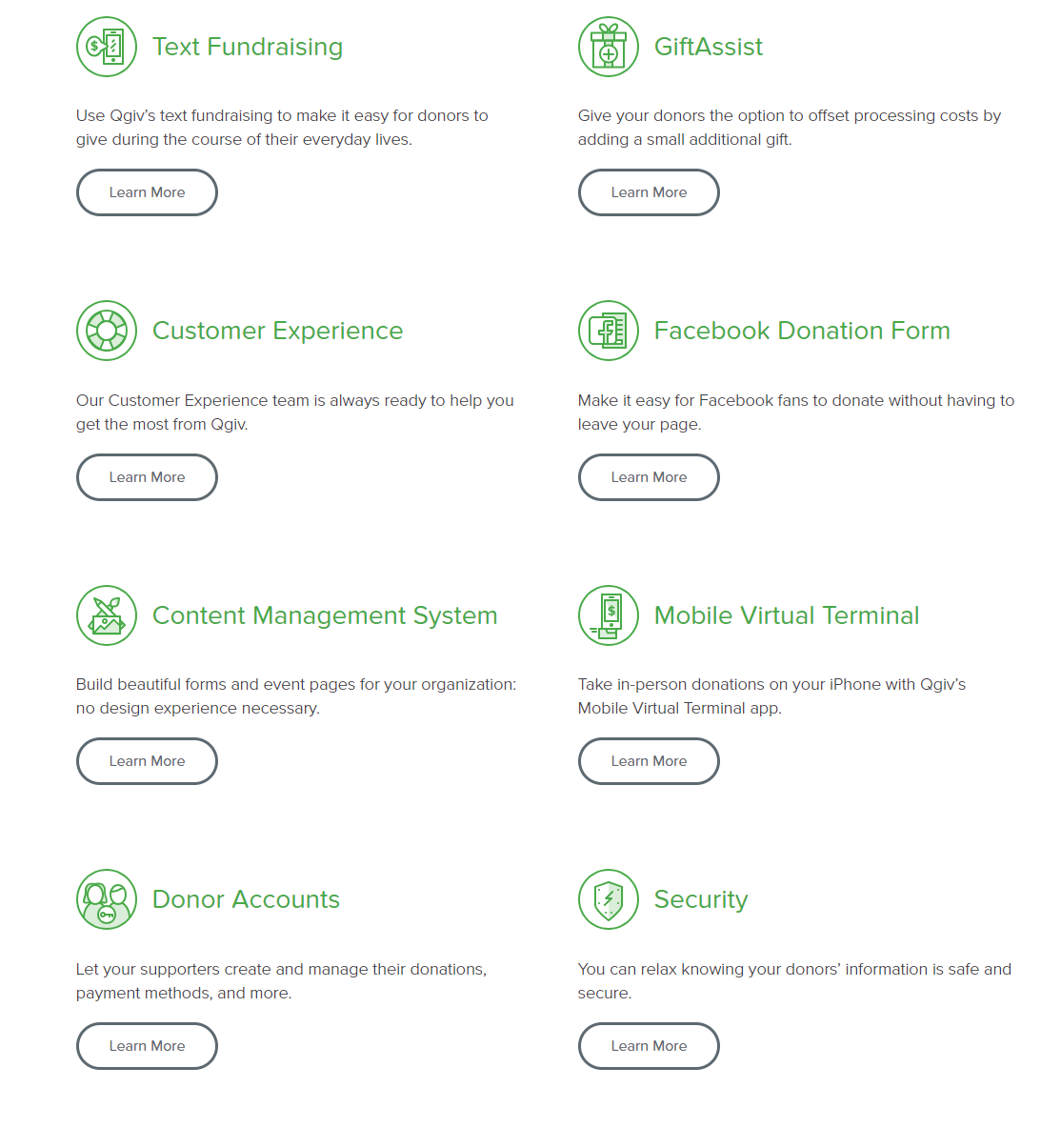
Good peer-to-peer fundraising software makes it easy to build a great event page, launch your event, and support your participants as they raise money for your cause.
You’ll Like These Extra Resources!
Now that you’re an expert on running a peer-to-peer fundraising campaign, check out some of these awesome resources to take your campaigns to the next level.
- 10 Great Peer-to-Peer Fundraising Ideas. So you want to host a P2P campaign! It’s time to decide what kind of culminating event you want to host. Check out this list of 10 fun ideas to get started.
- 30+ Virtual Peer-to-Peer Fundraising Ideas to Explore. Almost 70% of nonprofits are planning to use virtual elements in events post-COVID. Find out the benefits, plus get virtual event inspiration!
- The Key Peer-to-Peer Fundraising Best Practices for Success. For more tips and tricks on making the most of your campaign, check out our guide and learn more about rocking your P2P events.






